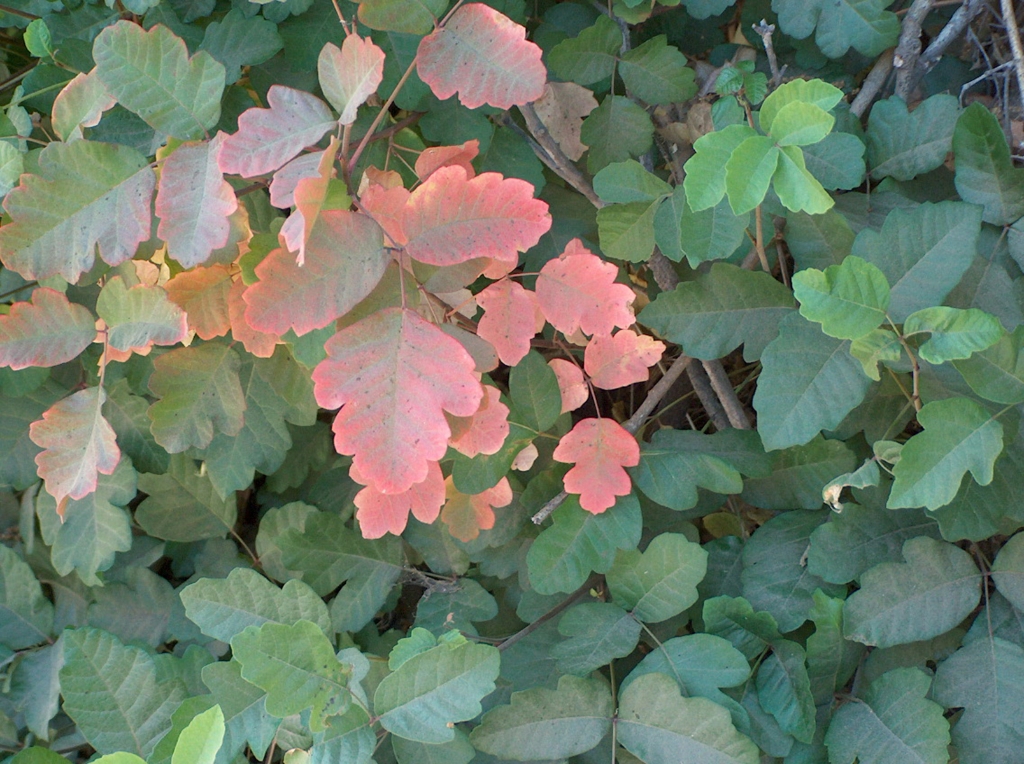
Island Chumash Plant Usage Guide Stop 3
To ensure your safety, please do not touch any of the plants at this trail stop. The featured plant is poison oak and it can grow amongst other plants in this area. Poison oak can cause painful allergic reactions and rashes if it comes in contact with the skin. Remember: leaves of three, leave it be!
Yasis (poison oak) provided an effective and readily available treatment for skin disorders. Poison oak grows on all of the Channel Islands except Santa Barbara Island, and is readily identified in spring as a three-leafed shrub or vine with bronze-green foliage. During late summer and fall the leaves turn a red or rust color, and white berries develop.
The Chumash used poison oak to treat warts, cankers, and skin cancer. Warts and cankers were treated by breaking a stem and spreading the juice on the sore. The treated skin turned black, and when it healed the wart or canker was gone. A similar poison oak treatment was used to stop blood flowing from an open wound.
Poison oak was also used in conjunction with mugwort to treat skin cancer. First, a small patch of dried mugwort was placed on the cancer, set afire, and allowed to burn down to the skin. Following this, poison oak would be applied to any cancer that remained. The poison oak was applied during spring, when the stems were full of sap. The skin turned black, and when it healed the cancer was gone.
Other medical problems were treated with milder herbal remedies. The petals of wild rose were boiled for two or three minutes and the resulting wash used to soothe irritated eyes or the gums of teething babies. Wild tobacco was mixed with lime from burned shells and used as a purgative for stomach pains and intestinal parasites.
Is there something we missed for this itinerary?
Itineraries across USA


















































